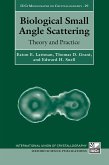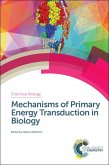Although invisible to the bare eye, bacterial cells are large enough to make complex decisions. Cells are composed of thousands of different molecular species including DNA, proteins, and smaller molecules, allowing them to sense their environment, to process this information, and to respond accordingly. Such responses include expression of genes or the control of their movement. Despite these properties, a living cell exists in the physical world and follows its laws. Keeping this in mind can help answer questions such as how cells work and why they implement solutions to problems the way they do. Applying physical principles in biology allows researchers to solve challenging problems at the interface between biology and the physical sciences, including how accurately biological cells can sense chemicals in their environment, how cells encode physical stimuli in biochemical pathways, or how cells amplify signals and adapt to persistent stimulation. In this book, the reader is introduced to this fascinating topic without the need for extensive mathematical details or huge prior knowledge in biological physics.
Dieser Download kann aus rechtlichen Gründen nur mit Rechnungsadresse in A, B, BG, CY, CZ, D, DK, EW, E, FIN, F, GR, HR, H, IRL, I, LT, L, LR, M, NL, PL, P, R, S, SLO, SK ausgeliefert werden.









